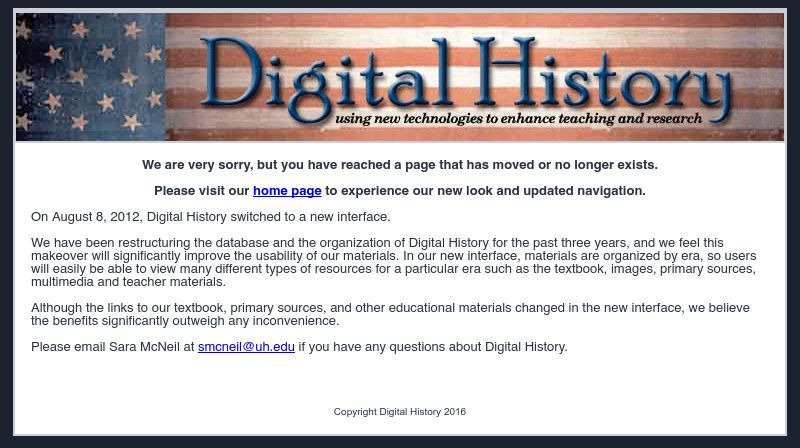Curated OER
Examining Secondary Sources: The American Revolution
Learners who have a grasp on the events of the Revolutionary war view clips from five different films as secondary sources. They take notes on each clip thinking about historic inaccuracies. They then view parts of the film The Patriot...
Curated OER
Abraham Lincoln: Our Man for All Seasons
Students analyze perceptions of slavery during the Civil War era. For this Abraham Lincoln lesson, students research Internet and print sources regarding Lincoln's view of slavery. Students also compare pro- and anti-slavery political...
Curated OER
Children and Slavery Document Search
Students review the causes of slavery, the Middle Passage, triangular trade and the spread of slavery throughout colonies. They work in small groups and search documents in order to find the answers to a question and document packet.
National Endowment for the Humanities
From Courage to Freedom
Learners analyze Frederick Douglass' narrative about Christianity and slavery. In this Frederick Douglass instructional activity, young scholars read his slave narrative and analyze its word choice, imagery, irony, and rhetorical...
University of California
The Civil War: Lincoln’s Speeches
Abraham Lincoln is responsible for uniting the states during the most tumultuous periods in American history, and for his elegant oratory that kept the Union believing in its cause. Young histoians analyze various speeches by America's...
Teaching Tolerance
Mass Incarceration as a Form of Racialized Social Control
Mass incarceration: A result of a tough stance on crime or racial discrimination, you decide. Academics explore the history and reasons behind mass incarcerations in the United States and its impact on ethnic communities. The...
Middle Tennessee State University
John Brown: Hero or Villain?
"Love it or leave it." "You're either for us or against us." Rhetoric and it's polarizing effects are the focus of a instructional activity that uses John Brown's attack on Harper's Ferry as an exemplar. Groups examine primary source...
Curated OER
The 1808 Slave Trade Abolition Deadline
Students study the trans-Atlantic Slave trade. In this slave trade lesson, students study the Constitutional Convention Notes and the impact on United States slavery. Students research the slave trade database and other primary sources...
Curated OER
Sectionalism in Early U.S.
Students, divided into three groups, representing the Northeastern, Southern, Western United States. They research these areas in early American history and as a group prepare charts, graphs and reports. They explain their needs and...
Curated OER
The Oneida Community and Birth Control
Students examine the practice of mail continence in Oneida. They explore the reasons behind the community's practice of limiting births. They discuss the relationship between reproductive freedom and woman's rights.
University of Virginia
American Historical Review: The Differences Slavery Made
An in-depth scholarly investigation on the differences slavery made in the shaping of societies in the North and South by using two similar communities, one north and one south of the Mason-Dixon Line.
Independence Hall Association
U.s. History: The Southern Argument for Slavery
In order to convince oneself that owning another was defensible, Southerners aruged that there were economic, religious, historical, and legal reaons that slavery was a good thing. Read about some of these justifications in more detail,...
Digital History
Digital History: Southern Nationalism
An interesting look at the Southern attempt to, at first defend the institution of slavery, and later, to become defiant about it. See how Southern intellectuals, religious leaders, and politicians strove to create a self-sufficiency in...












